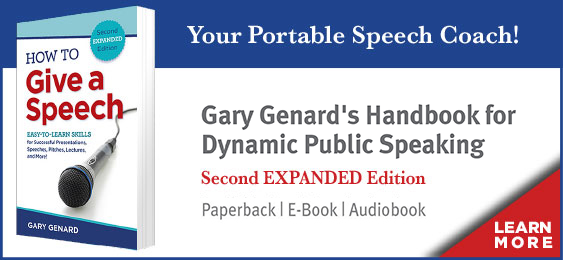It's bedtime, and 6-year-old Jenny has just put on her pajamas.
"I want a story, Daddy!" she proclaims with a gap-toothed smile.
"Sure, honey," her father replies. "Get under the covers and I'll text you 'The Three Little Pigs.' And if you're really good, I'll print it out for you and distribute the handouts!"
Jenny, of course, may never smile again.
For tips on how to engage your audiences rather than destroying their interest, download my free cheat sheet, "5 Rules for Succeeding with PowerPoint."
What's Wrong with This Picture?
Comparing a bedtime story with business presentations ("Handouts and bullet points and graphs, oh my!") may seem silly at first. But perhaps it isn't. The same principle of a speaker's need to engage and satisfy an audience, and the woeful presentations we inflict on our listeners instead, may come into play in both situations.
What inspires children and adult audiences alike is a story well told. That story may include interesting visual elements if appropriate, but it will always include forward momentum and human motives. Contrast that with the dreary style of "information delivery" professional audiences are subjected to millions of times each day, and it becomes clear that an improved paradigm of business presentations is needed.
And the place where that need exists more than any other is in the arena of PowerPoint.
Three Approaches to Help You Become Amazing
Here are three ways you can create and deliver more effective PowerPoint presentations. Each is based on the work of a single individual. The first person is designer Nancy Duarte, the second person is presentation guru Garr Reynolds, and I bring up the rear.
Nancy Duarte: "Think like a Designer." Author of slide:ology: The Art and Science of Creating Great Presentations, Duarte is an expert in presentation development and design. Even so, her book, in the words of the back cover copy, "combines conceptual thinking and inspirational design," and "is full of practical approaches to visual story development"(emphasis added). Story, that is, remains a central component of creating audience interest in her mind, whatever the emphasis on design.
To put Duarte's ideas to work, remember that your slides are never really about the data. "They are about the meaning of the data" (Duarte). Familiarize yourself with visual elements and how they interact (flow, contrast, unity, background, color, text, etc.), and learn how to create movement and visual interest. Choose the right element, highlight what's important, and keep it simple for a PowerPoint deck that's elegant and efficient in equal measure.
Garr Reynolds: Presentation Zen. Reynolds's aim in his book Presentation Zen is to help people communicate more clearly and creatively in visual terms. According to his web site, his approach "takes the principles and lessons from the Zen arts and from the natural world in Japan to reveal simple concrete tips for communicating" (http://www.garrreynolds.com/introduction/).
In terms of design, Reynolds promotes 10 tips that focus on, among other things, simplicity, quality, color, and flow. Restraint is a concept that scores high, and his PowerPoint presentations are instantly identiable as examples of his principles. These decks are like haikus: brief and clean, with sometimes striking juxtapositions of imagery.
Gary Genard: Performing PowerPoint. My own philosophy is that a PowerPoint presentation, like every talk, needs to be an effective performance. Design elements have great power to interest and engage audiences. But in the end a PowerPoint presentation is an oral performance, and the key relationship is not PowerPoint-to-audience, but performer-to-audience. You, in other words, are the prime influencer in the room, and it is your job to use your slides to create such influence.
You can do so by keeping in mind three simple concepts: engagement, story, and anticipation. Engagement trumps design, however necessary and exciting your design may be. Your story launches your audience's engagement, and then does more by weaving your visuals into the forward momentum of your narrative drive.
Story does one more thing: it creates anticipation—and therefore maximum interest—in what you're about to say. You can click on a slide and talk about it, or you can entice with your story's next element, and then show your audience what you mean. Which do you think will be more exciting for listeners?
________________________________
Sources:
Duarte, Nancy. slide:ology: The Art and Science of Creating Great Presentations. Sebastopol, CA: O'Reilly Media, 2008.
Genard, Gary. How to Give a Speech. Arlington, MA: Cedar & Maitland Press, 2007.
Reynolds, Garr. Presentation Zen: Simple Ideas on Presentation Design and Delivery. Berkeley, CA: New Riders/Pearson Education, 2012.



